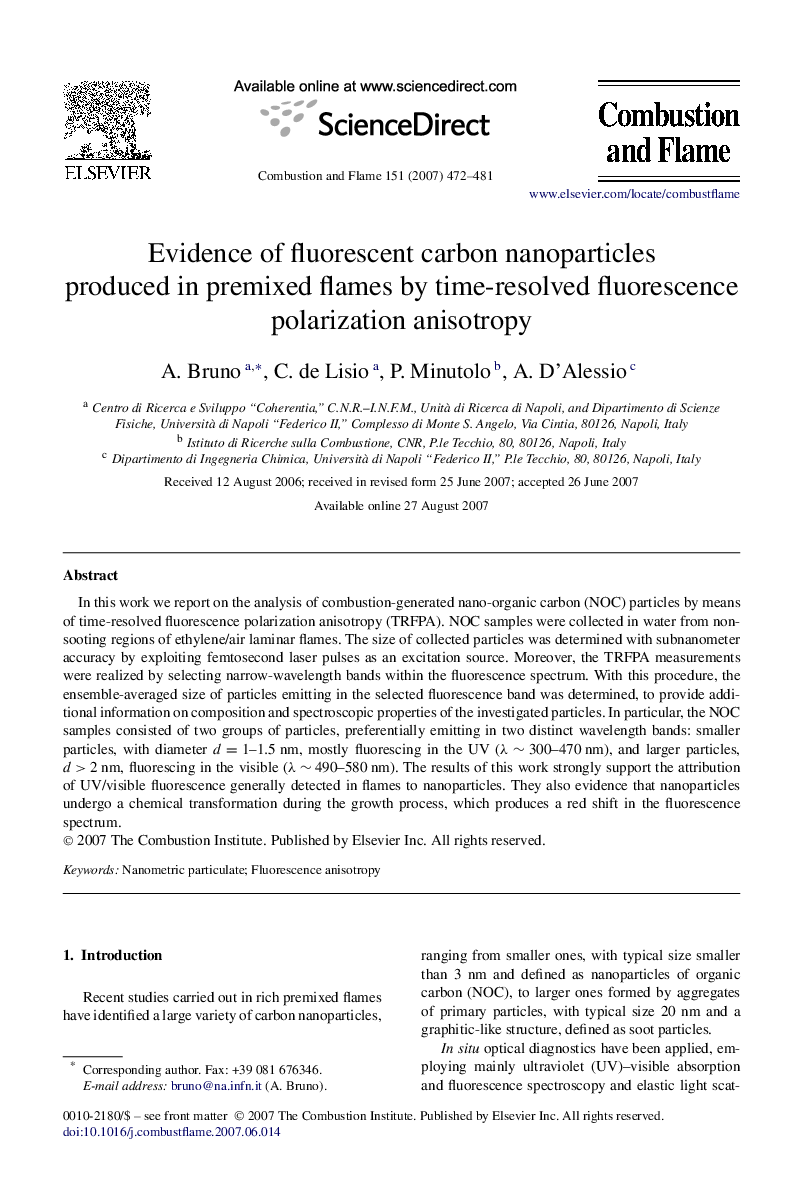| Article ID | Journal | Published Year | Pages | File Type |
|---|---|---|---|---|
| 169616 | Combustion and Flame | 2007 | 10 Pages |
In this work we report on the analysis of combustion-generated nano-organic carbon (NOC) particles by means of time-resolved fluorescence polarization anisotropy (TRFPA). NOC samples were collected in water from nonsooting regions of ethylene/air laminar flames. The size of collected particles was determined with subnanometer accuracy by exploiting femtosecond laser pulses as an excitation source. Moreover, the TRFPA measurements were realized by selecting narrow-wavelength bands within the fluorescence spectrum. With this procedure, the ensemble-averaged size of particles emitting in the selected fluorescence band was determined, to provide additional information on composition and spectroscopic properties of the investigated particles. In particular, the NOC samples consisted of two groups of particles, preferentially emitting in two distinct wavelength bands: smaller particles, with diameter d=1–1.5 nmd=1–1.5 nm, mostly fluorescing in the UV (λ∼300–470 nmλ∼300–470 nm), and larger particles, d>2 nmd>2 nm, fluorescing in the visible (λ∼490–580 nmλ∼490–580 nm). The results of this work strongly support the attribution of UV/visible fluorescence generally detected in flames to nanoparticles. They also evidence that nanoparticles undergo a chemical transformation during the growth process, which produces a red shift in the fluorescence spectrum.
